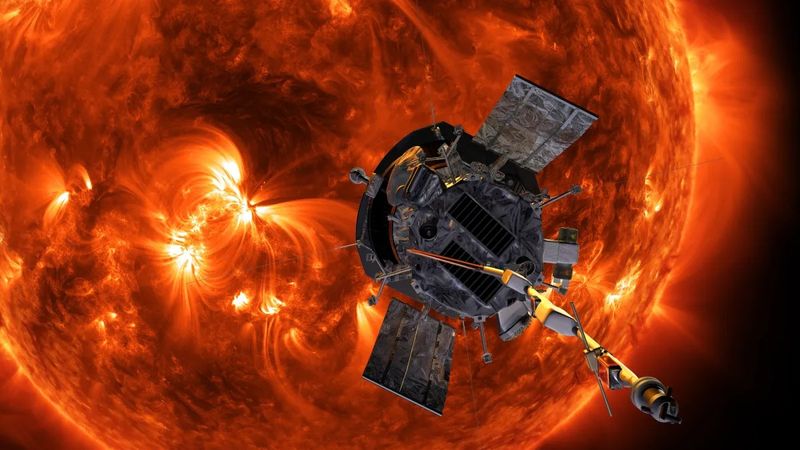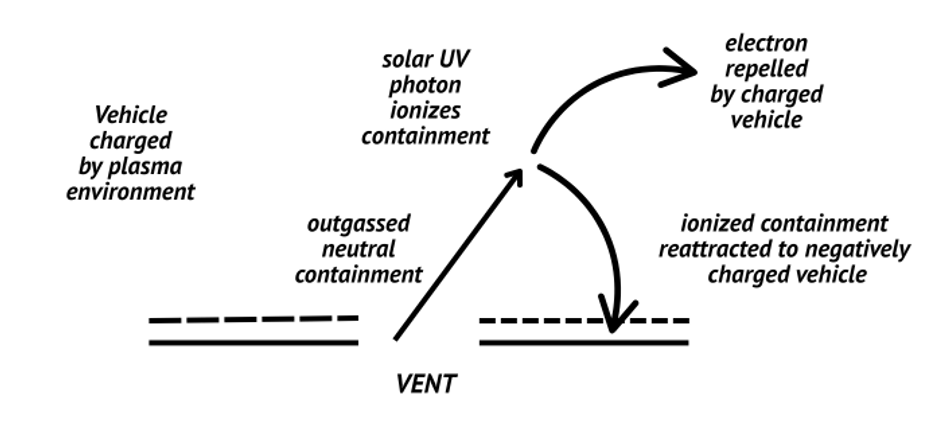Connectors for Spaceflight: Working in the Harshest Environments
Space is one of the toughest environments that designers must face. Far from the protection of Earth’s atmosphere, satellites and probes are exposed to hazardous levels of radiation. The connectors and cables that carry signals throughout the spacecraft must be protected to ensure their performance.

Image credit: NASA
In 2018, NASA launched the Parker Solar Probe, a spacecraft designed to withstand the extreme conditions of our Sun’s outer atmosphere. Parker’s incredible speed made headlines and captured the public’s imagination, but one of its greatest engineering achievements lay in its ability to survive an environment saturated with intense radiation. Resistance to radiation is a key requirement of every spacecraft, not only for scientific probes like Parker, but for all equipment that ventures beyond Earth's protective atmosphere.
The Harsh Reality of Space Radiation
Space is an unforgiving environment, presenting some of the toughest challenges that engineers and designers must overcome. Earth’s atmosphere acts as a natural shield against cosmic radiation, but once a spacecraft leaves this protective layer, it is exposed to high-energy particles from the Sun and beyond. These energetic particles can disrupt delicate electronics, degrade materials, and even cause catastrophic failures in sensitive systems.
Connectors are the unsung heroes of space exploration. Every spacecraft, from Earth-orbiting satellites to deep-space probes, relies on a complex network of connections to distribute electricity. Whether linking scientific instruments or delivering power, these connectors must remain operational throughout missions lasting years or decades.
Connectors and cables therefore provide the link between vital spacecraft systems. These connectors must function flawlessly despite prolonged exposure to charged particles, electromagnetic interference (EMI), and the extreme temperatures that they face in space.
To achieve this, connectors must be designed with materials and surface treatments that minimize their radiation susceptibility to radiation. One of the primary threats posed by radiation is its ability to ionize materials, leading to conductivity changes, material degradation, or even short circuits. Choosing the correct radiation-resistant materials plays an enormous role in ensuring reliability.
Standard commercial connectors use thin plating on contacts to keep costs to a minimum, but in space applications, heavy gold plating is the material of choice. Gold offers exceptional conductivity and resistance to corrosion, ensuring that electrical connections remain reliable even under the toughest conditions.
In addition to the surface treatment of electrical contacts, the insulation and structural components of connectors must also be carefully selected. Many plastics and polymers suffer from radiation-induced embrittlement, which can lead to cracking and failure. Space-grade connectors use specially formulated high-performance polymers that resist radiation damage and limit outgassing.
The Issue of Outgassing and Material Selection
Outgassing is a major concern in spaceflight applications. In the vacuum of space, certain materials release gases that are trapped during manufacture. If these gases condense onto sensitive equipment, they can lead to a loss of performance. Outgassing has been a major problem in past space missions, affecting critical instrumentation and reducing mission effectiveness.
The Stardust probe, launched in 1999, encountered significant outgassing issues with its navigation camera. Gases released from onboard materials condensed onto the cold sensor surface, leading to a substantial loss of image resolution. This problem nearly compromised the probe’s ability to capture images of its target, the Wild 2 comet.
The Cassini spacecraft, which explored Saturn and its moons, experienced similar complications. Optical instruments and scientific sensors were affected by material outgassing, but the designers had prepared for this possibility by building heaters into the probe to counter the problem. The experiences gained in these examples has led to extensive pre-launch testing and material selection to mitigate the risks. Connector components, including insulators and mounting accessories, must be chosen with care to prevent contamination of sensitive optics and sensors.

Shielding Against EMI and Radiation
Electromagnetic interference (EMI) is another challenge that must be addressed in radiation-heavy environments. High-energy cosmic rays and solar flares can create electromagnetic disturbances capable of corrupting data transmissions and interfering with scientific instruments.
To reduce these risks, connectors destined for orbit can employ shielding. Machined, lightweight aluminium backshells provide EMI protection while also reducing magnetic interference. Unlike traditional steel connector shells, which can introduce unwanted magnetic fields, aluminium offers a low-magnetic alternative that helps to ensure accurate sensor readings. Aluminium also delivers considerable weight-saving over steel, a significant concern in spaceflight applications.
Spacecraft operate on strict power budgets, and any increase in electrical resistance within a connector can lead to power losses that jeopardize mission success. Even a minor increase in contact resistance could cause a loss of important signals, making it harder for scientists to collect precise data from deep-space probes.
Perhaps the most extreme example was the New Horizons spacecraft. After 9 years of travel through the solar system, the probe had a remarkably short time before its great speed took it beyond the orbit of Pluto and into deep space. Any failure in its connectors could have meant the loss of invaluable data from the farthest reaches of our solar system. For this reason, space-rated connectors undergo extensive testing to ensure they maintain ultra-low contact resistance, even after years of radiation exposure.
The Future of Space Connectors
As commercial spaceflight continues to grow and missions push further into the solar system, the demand for radiation-resistant and low-outgassing connectors will only increase. Whether for communication satellites in Earth orbit, probes exploring the icy moons of Jupiter, or future manned missions to Mars, ensuring connector reliability in extreme radiation environments will remain a key requirement.
From gold-plated contacts to EMI-shielded housings and low-outgassing polymers, every element of spaceflight connectors must be meticulously designed to withstand the harshest conditions imaginable. In the end, the success of a mission doesn’t just depend on rockets and thrusters—it depends on the tiny, often-overlooked connectors that keep everything working, even in the face of the universe’s most formidable forces.
Harwin manufactures a range of connectors that are currently serving in some of the world’s leading space projects, including the high-performance Gecko and Gecko-MT families. With years of experience in supplying the space industry, Harwin understands the need for lightweight, low-profile connectors that provide high reliability in unforgiving conditions.
